The Importance of Sea Turtles in North Sulawesi

Sea turtles journey between land and sea and swim thousands of ocean miles during their lifetimes. Females literally wait decades until they are able to reproduce, and once they can, they will return to the same beaches where they were born to lay eggs of their own. Females can lay hundreds of eggs in one nesting season, but once laid, the eggs are almost immediately at risk from crabs, snakes, sea birds, beach dogs, monitor lizards and other predators that can dig or burrow. Surviving eggs will release vulnerable hatchlings, of which only a few will make it through their first year of life.
Sea turtles have a lot to overcome in their early years, but once they reach adulthood they have very few predators and they perform an extremely important role in marine eco-systems. In this Article, we take a look at the 7 species of sea turtle, why they are important, what threats and challenges sea turtles are facing, where to see sea turtles in North Sulawesi, and what can be done to support sea turtle conservation.
World Turtle Species
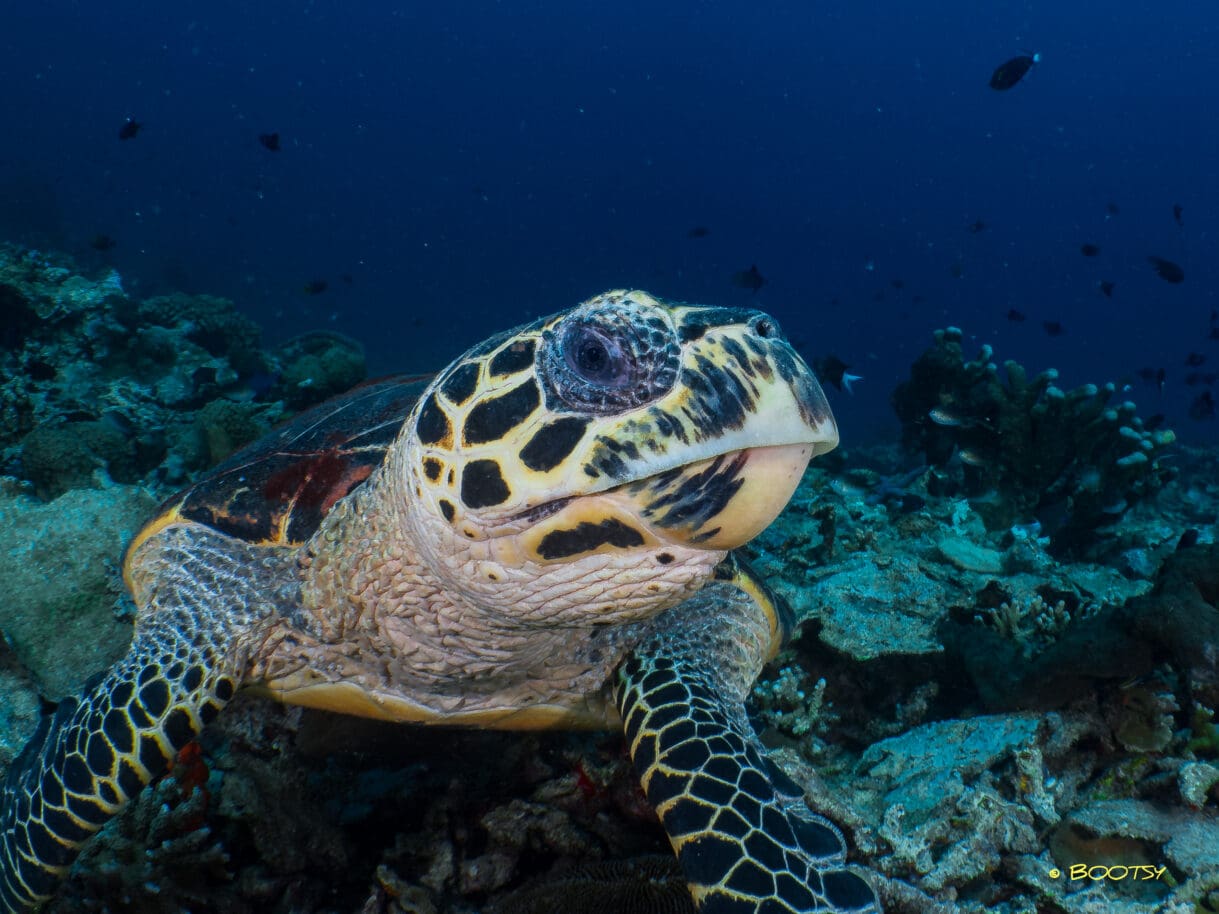
7 species of sea turtles are known to exist in the world. 6 species out of these 7 can be found in the Coral Triangle – of which Sulawesi is at the heart.
Below you will find a list of the 6 species of sea turtles that are in existence today, along with their status on the IUCN Red List:
- Green Sea Turtle: Chelonia Mydas | Endangered
- Loggerhead Sea Turtle: Caretta caretta | Vulnerable
- Hawksbill Sea Turtle: Eretmochelys imbricata | Critically Endangered
- Leatherback Sea Turtle: Dermochelys coriacea | Vulnerable
- Kemp’s Ridley Sea Turtle: Lepidochelys kempii | Critically Endangered
- Flatback Sea Turtle: Natator depressus | Data Deficient
Why Are Sea Turtles Important to Marine Eco Systems?
Here are just some of the ways that sea turtles contribute to our marine eco-systems:
Seagrass Beds & Coral Reefs
Sea turtles help maintain the health of seagrass beds and coral reefs that benefit commercially valuable species such as shrimp, lobster, and tuna. Without sea turtles cleaning and maintaining these environments they would become overrun by algae and eventually become unproductive and die – leaving the bigger commercial fish without marine habitat. In this respect, turtles are at the top of the chain and if they are removed, everything below them will suffer from a knock-on effect.
Turtle Transport, Shelter and Food
Sea turtles embark on extremely long journeys, migrating hundreds and even thousands of miles through the ocean. Many marine organisms join them on their travels, using turtles as a form of transport and protection. Barnacles, algae, crustaceans and other small creatures attach themselves to turtles, while fish swim underneath them, sheltering from predators.
Jellyfish Control
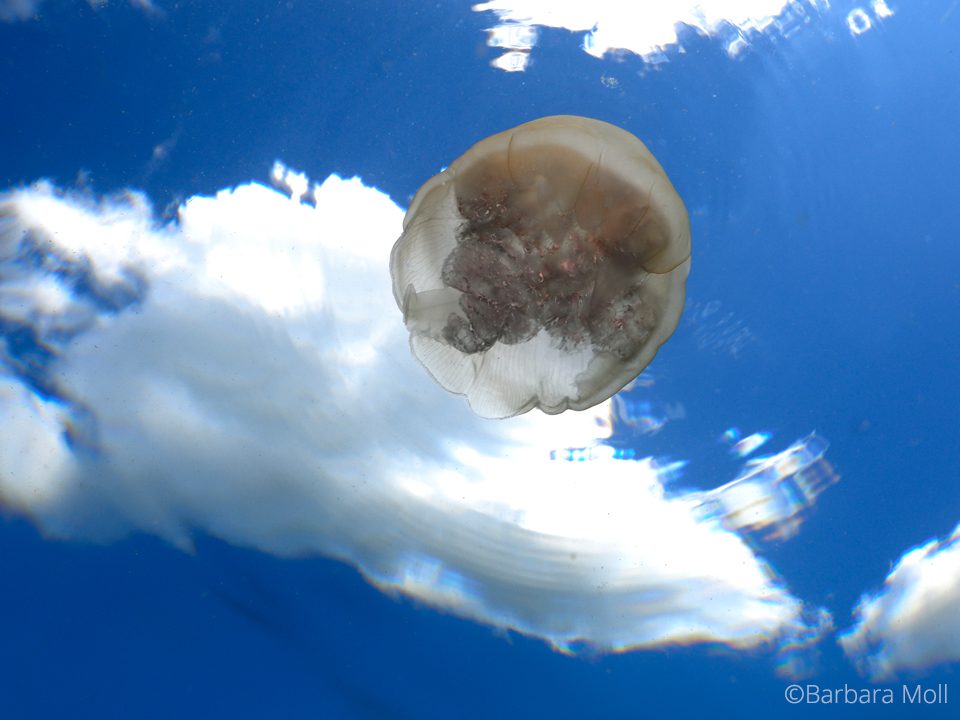
Turtle species such as the leatherback will feed on Jellyfish exclusively. An abundance of jellyfish can cause the depletion of fish stocks, however, when the jellyfish population is controlled by sea turtles consuming them, the risk to fish stocks is minimalized.
Sea Sponge Control
Just as the leatherback turtle feeds on jellyfish, the hawksbill turtle feeds primarily on sea sponges. Although coral Reefs rely on sea sponges to recover and recycle key nutrients released by corals, if the sponges are allowed to overgrow they will begin to suffocate corals, causing them to die. By eating sea sponges, hawksbills help prevent them from overgrowing and protect precious coral reefs.
And, because hawksbills eat several types of sea sponges, less-common species are able to grow, which increases the variety of life in the reefs and enhances the ocean’s biodiversity.
Turtles and The Tourism Dollar
Sea turtles are found all over the globe – often in developing countries that rely heavily on tourism and marine tourism for employment and to support the local economy and local businesses including bars, cafes, restaurants, hotels, guest houses etc. Sea turtles are a highlight for many scuba divers and snorkelers and the presence of sea turtles attracts water-tourists from around the world.
Read more: Best Dive Sites in North Sulawesi – Indonesia
Symbolism & Related Tourism
It’s not only scuba divers and snorkelers who will travel to see sea turtles, in some cultures, turtles are symbolic of wealth, knowledge, and prosperity. Followers of such beliefs will also make ‘pilgrimages’ to areas known for sea turtles.
Threats to Sea Turtle Populations
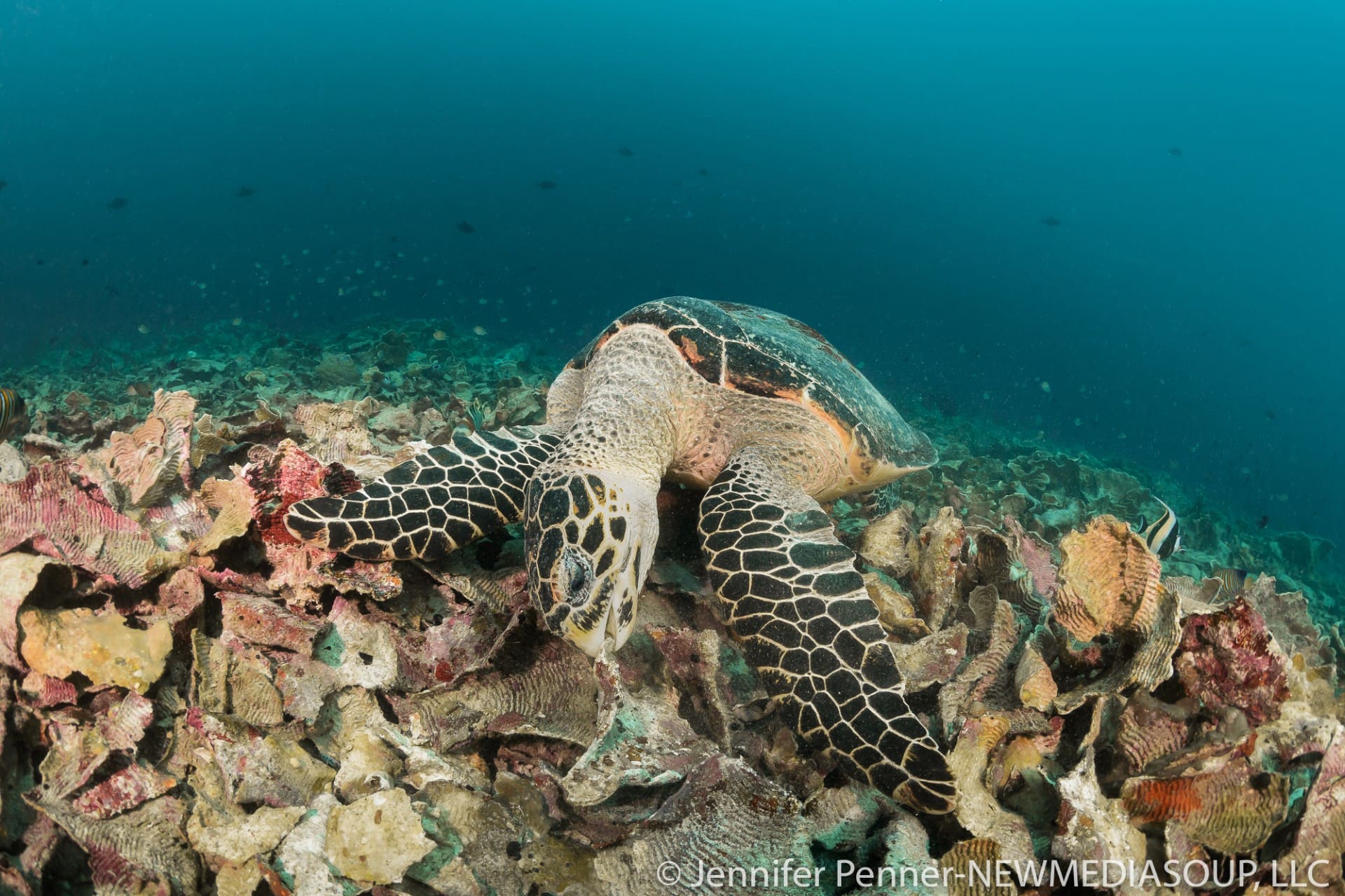
As we can see from the list of the 6 species of sea turtles above, all 7 species appear on the IUCN Red List and 6 out of 7 are listed as vulnerable, endangered, or critically endangered.
Sea turtle populations have been dwindling around the world for decades due to a number of natural causes and human factors.
Here are some of the most significant causes affecting sea turtle numbers…
Loss of Habitat
Habitat loss caused by coastal development around nesting beaches presents a threat to females if the beach on which they were born (and where they would lay their eggs) has already been developed into housing (for example).
If their nesting location has not been directly affected, the expansion of nearby towns and cities into coastal areas reduces the size of the available beaches, thereby displacing some turtles and causing a lack of nesting grounds for all females. If turtles are able to nest despite coastal development nearby, their eggs may be exposed to more threats than previously.
Plastic Pollution
Plastic pollution is a global problem that affects not just turtles but a large number of marine species. Turtles often mistake plastic bags and other items for food, consuming pieces of plastic floating in the oceans.
Bycatch
Turtles, unfortunately, are often bycatch (collateral damage) in commercial fishing where huge nets are cast and indiscriminately catch anything and everything inside of it. Due to the large schools of fish that are caught inside the nets, when the nets are winched out of the water, any turtles within the net are usually crushed by the weight of the fish.
Destructive Fishing Practices
It’s not only legal methods of fishing that can have disastrous consequences for sea turtles. In some areas, illegal fishing practises still occur. Dynamite fishing, trawler nets, long lines and cyanide fishing can all either directly harm sea turtles or negatively affect them and their habitat.
Illegal Trade
Despite numerous global campaigns regarding the effectiveness of turtle meat and turtle products as having medicinal and health enhancing properties, there is still a strong black market – especially in Asia.
The green sea turtle (Chelonia mydas) takes its name from the green fat that is found underneath its shell. It is this green fat that is used in the making of green turtle soup.
While green turtle soup is illegal and sea turtles are protected there is still illegal trade in turtle meat, turtle eggs, turtle shells, and turtle shell products.
Climate Change & Rising Sea Levels
There are very few, if any, marine species that have not, or will not, be affected by climate change. As annual temperatures continue to increase and sea levels continue to rise we will start to see some of the lowest laying beaches begin to disappear. This loss of habitat may result in a lack of places for female turtles to rest while migrating, or more seriously, the loss of their nesting beaches.
Sea Turtles in Lembeh, North Sulawesi
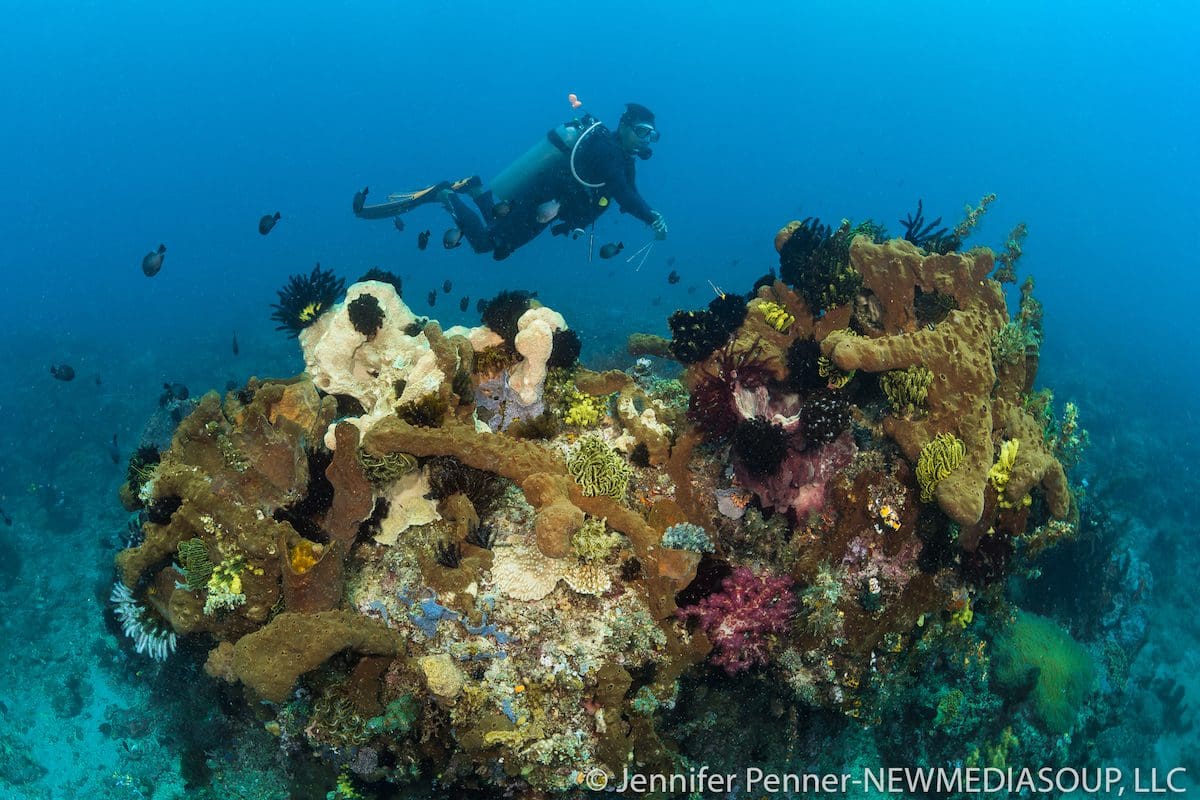
It is widely reported that we see 6 out of the 7 species of sea turtles in our waters – and without doubt, they all migrate through North Sulawesi, however, these are the two species that we see most often:
- Green sea turtle / Chelonia mydas
- Hawksbill turtle / Eretmochelys imbricata
Although we see sea turtles in the Lembeh Strait from time to time, most of our turtle sightings occur when we are reef diving at the north end of the Lembeh Strait or on the east coast of Lembeh Island. When we are visiting these areas, it is not unusual to see hawksbill turtles on our reefs.
Other turtle sightings also occur when we take day trips to Bangka Island. When diving in between Bangka and Lembeh we will often spot hawksbill turtles and when diving around Bangka Island we have sightings of both hawksbill and green sea turtles.
For our divers who head over to the Bunaken Marine Park, they usually experience numerous sightings of the green sea turtles that are resident in the Marine Park.
Read more: Guide to Diving in North Sulawesi
5 Things You Can Do to Help Sea Turtle Populations
There are several changes and positive actions, that we can all incorporate into our daily routines to help support sea turtle conservation, our coral reefs, and a broader spectrum of marine life.
“If we all make small changes, we can collectively make a big difference”
1. Say ‘no’ to single-use plastics. Use a refillable water bottle instead of using plastic shopping bags, invest in a ‘bag for life’ or cotton shopping bag, stop asking for straws in drinks – or carry your own reusable straw – available in stainless steel, glass, or bamboo. Instead of buying pre-packaged sandwiches and snacks, use a reusable lunch box.
2. Whether you are at home or on holiday, do not purchase any items that you suspect may contain any turtle produce (shell, meat, eggs etc).
3. Wherever possible do what you can to reduce your carbon footprint. If we all find ways to reduce our emissions we can slow down climate change.
4. Raise awareness. Not everyone is aware of the importance of sea turtles to our marine environments and even fewer may be aware of the challenges that sea turtles are now facing. If you are involved in sea turtle initiatives, take to social media and post about your activities. Spreading the word, spreads awareness.
5. Are you an underwater photographer? If you have images of sea turtles, share them and encourage others to do the same. Sea turtles can’t talk but we can all be responsible for giving them a voice!
Book Your Stay at Lembeh Resort
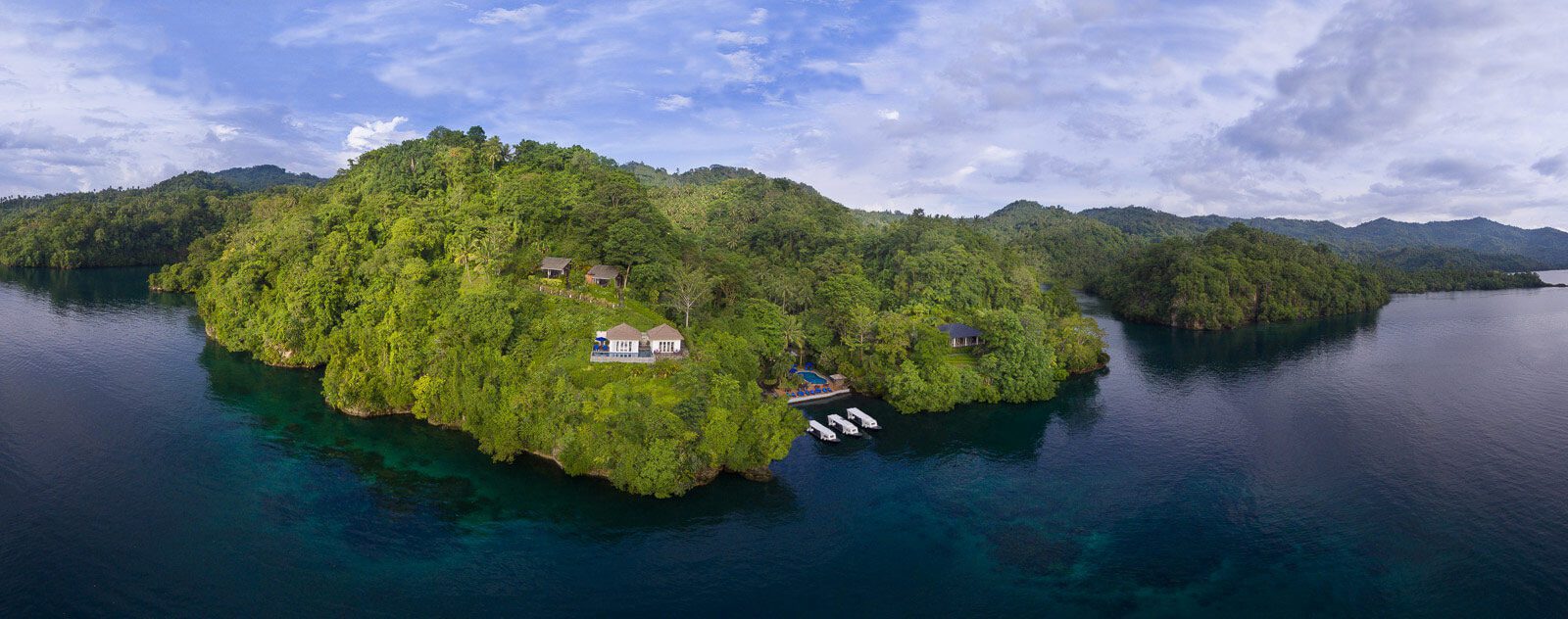
If you are ready to book your stay with us – or would like more information about Lembeh resort rates and availability contact us at reservations@LembehResort.com.
Our reservations team looks forward to assisting you!
Further Reading
If you enjoyed reading this article, you may also enjoy some of our other recent posts about marine conservation and marine species found in the Lembeh Strait:



